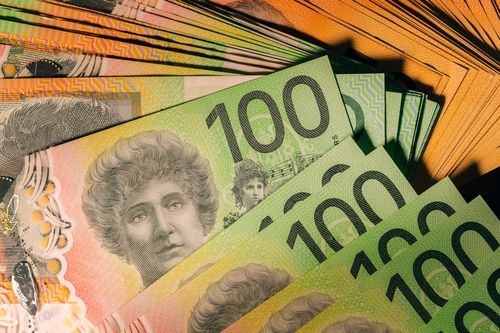Australian Dollar rises amid Chinese stimulus and soft PCE data from the US
- Markets in 2026: Will gold, Bitcoin, and the U.S. dollar make history again? — These are how leading institutions think
- Trump says Venezuela's Maduro deposed, captured after US strikes
- Bitcoin Price Surges To $90,000. U.S. Arrests Venezuela's President, Triggers Bull Frenzy
- After Upheaval in the World’s Largest Oil Reserve Holder, Who Will Emerge as the Biggest Winner in Venezuela’s Oil Market?
- U.S. to freeze and take control of Venezuela's Bitcoin holdings after Maduro capture
- Ethereum Price Forecast: Accumulation addresses post record inflows in December despite high selling pressure

AUD/USD gains traction from risk-on sentiment and China's stimulus measures.
Hawkish RBA stance and soft US inflation maintain upside potential for AUD/USD.
Markets are still betting on a 50 bps cut by the Fed.
The AUD/USD gained traction on Friday, climbing by 0.20% to 0.6910. Optimism surrounding China's stimulus measures, including monetary easing by the People's Bank of China (PBOC), provided support to the Australian Dollar, boosting risk appetite among investors. Personal Consumption Expenditures (PCE) figures from the US from August came in soft, also prompting USD weakness.
On one hand, the Reserve Bank of Australia (RBA) doesn't plan on cutting rates while the Federal Reserve (Fed) has already started its easing cycle, which adds downward pressure to the pair.
Daily digest market movers: Australian Dollar rises PCE data weights on the USD.
The Australian Dollar appreciated against the US Dollar (USD) due to positive economic news from China and soft economic data from the US.
The People's Bank of China (PBOC) implemented stimulus measures, including a rate cut and lower reserve requirement ratio, boosting risk sentiment and supporting the AUD.
The RBA reiterated its hawkish stance, implying that the bank will maintain high interest rates until inflation returns to the target range, supporting the AUD.
US inflation, as measured by the headline PCE Price Index, increased by 2.2% YoY in August, slightly below expectations and suggesting a modest inflationary environment.
The core PCE Price Index, excluding food and energy, rose by 2.7%, in line with expectations and indicating a stable core inflation rate.
Markets are betting on high odds of a 50 bps cut by the Fed in the November meeting and monetary policy divergence between the US central bank and the RBA, both supportive of the Aussie.
AUD/USD technical outlook: AUD/USD steady, hovering below 0.7000
The Relative Strength Index (RSI) and Moving Average Convergence Divergence (MACD) on the daily chart are strong, with the former above 50 pointing upward and the latter printing rising green bars.
With bullish momentum mounting, it all points to the pair being set for more upside. The next target is seen at 0.7000.
Australian Dollar FAQs
One of the most significant factors for the Australian Dollar (AUD) is the level of interest rates set by the Reserve Bank of Australia (RBA). Because Australia is a resource-rich country another key driver is the price of its biggest export, Iron Ore. The health of the Chinese economy, its largest trading partner, is a factor, as well as inflation in Australia, its growth rate and Trade Balance. Market sentiment – whether investors are taking on more risky assets (risk-on) or seeking safe-havens (risk-off) – is also a factor, with risk-on positive for AUD.
The Reserve Bank of Australia (RBA) influences the Australian Dollar (AUD) by setting the level of interest rates that Australian banks can lend to each other. This influences the level of interest rates in the economy as a whole. The main goal of the RBA is to maintain a stable inflation rate of 2-3% by adjusting interest rates up or down. Relatively high interest rates compared to other major central banks support the AUD, and the opposite for relatively low. The RBA can also use quantitative easing and tightening to influence credit conditions, with the former AUD-negative and the latter AUD-positive.
China is Australia’s largest trading partner so the health of the Chinese economy is a major influence on the value of the Australian Dollar (AUD). When the Chinese economy is doing well it purchases more raw materials, goods and services from Australia, lifting demand for the AUD, and pushing up its value. The opposite is the case when the Chinese economy is not growing as fast as expected. Positive or negative surprises in Chinese growth data, therefore, often have a direct impact on the Australian Dollar and its pairs.
Iron Ore is Australia’s largest export, accounting for $118 billion a year according to data from 2021, with China as its primary destination. The price of Iron Ore, therefore, can be a driver of the Australian Dollar. Generally, if the price of Iron Ore rises, AUD also goes up, as aggregate demand for the currency increases. The opposite is the case if the price of Iron Ore falls. Higher Iron Ore prices also tend to result in a greater likelihood of a positive Trade Balance for Australia, which is also positive of the AUD.
The Trade Balance, which is the difference between what a country earns from its exports versus what it pays for its imports, is another factor that can influence the value of the Australian Dollar. If Australia produces highly sought after exports, then its currency will gain in value purely from the surplus demand created from foreign buyers seeking to purchase its exports versus what it spends to purchase imports. Therefore, a positive net Trade Balance strengthens the AUD, with the opposite effect if the Trade Balance is negative.
Read more
* The content presented above, whether from a third party or not, is considered as general advice only. This article should not be construed as containing investment advice, investment recommendations, an offer of or solicitation for any transactions in financial instruments.

